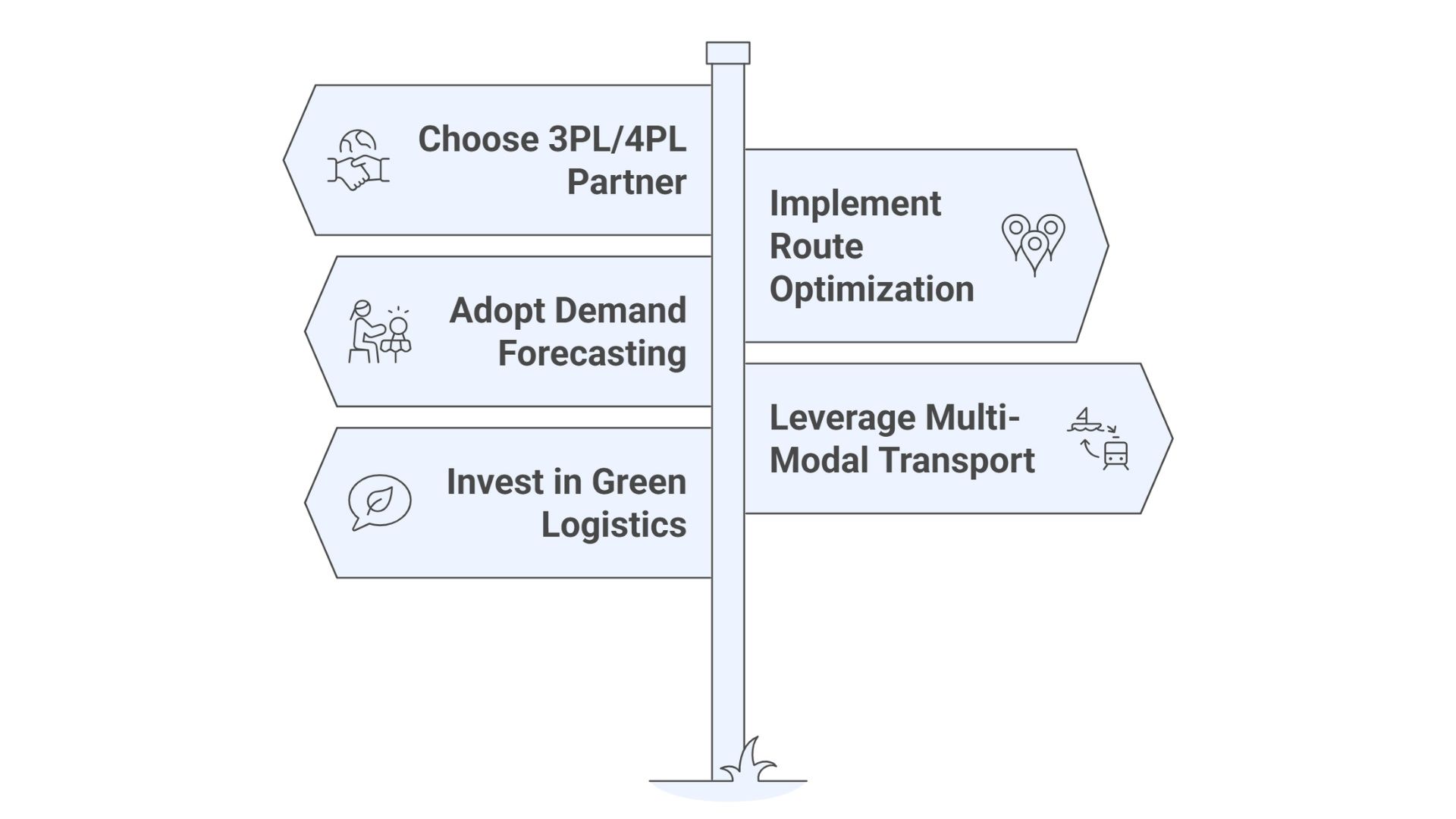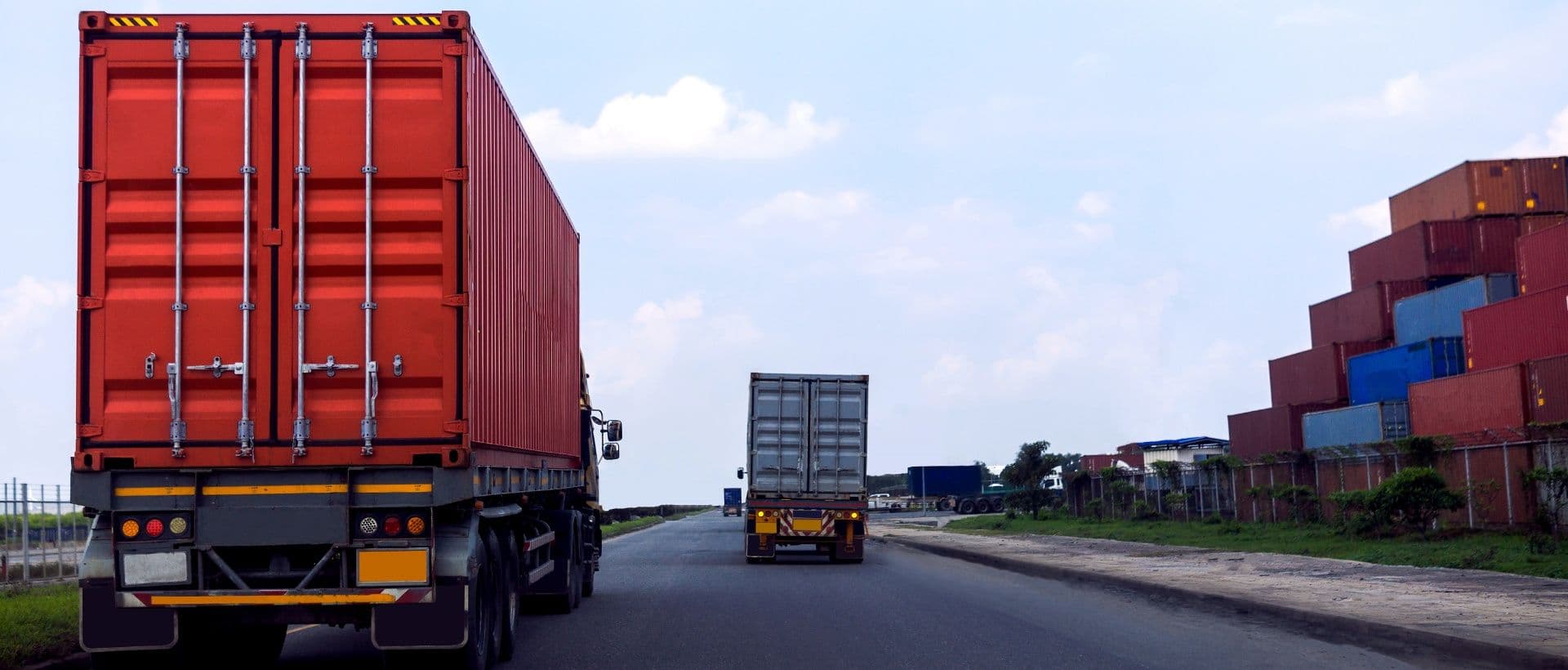
Transportation and Distribution: The Driving Force of Supply Chain Success
September 23, 2025
AAJ Swift

All the products you purchase undertake a long journey before they reach your hands. As per the World Bank, international trade in merchandise and services accounted for nearly 60% of the world's GDP in 2023. The eCommerce market alone accounted for more than $6.3 trillion worth and is growing every year. Behind the numbers is an operation that works behind the scenes: the transportation and distribution of goods.
Being familiar with the transportation & distribution definition is not limited to logistics experts. Company owners, producers, retailers, and supply chain managers all have to learn about it if they're interested in saving money, making customers happy, and expanding their businesses.
What is Transportation and Distribution?
When people talk about logistics, they tend to interchange transportation and distribution as though they are the same thing. They're intimately connected, not the same. Transportation is the actual act of transporting goods.
It might be trucks bringing raw materials to a factory, ships shipping products overseas, or aeroplanes delivering time-sensitive packages. Distribution is what occurs once those products are delivered. It involves storing, managing inventory, processing orders, and delivering the end product to the customer.
Together, transportation & distribution ensure that goods move efficiently from beginning to end. When both sides fail, deliveries are delayed, and businesses lose customers.
Transportation vs. Distribution: Key Differences

Here are the key differences between Transportation and Distribution
Transportation
- Definition: Transferring goods from one location to another by road, rail, sea, or air.
- Focus: Transit speed, cost, and reliability.
- Key Activities: Inbound logistics, outbound logistics, reverse logistics.
- End Goal: Efficiently move products through the supply chain.
Distribution
- Definition: Storing, managing, and delivering merchandise to retailers or customers.
- Focus: Storage, order fulfillment, and last-mile delivery.
- Key Activities: Warehousing, order processing, and customer delivery.
- End Goal: Get products to end users accurately and on time.
This creates the transportation and distribution definition: one controls the trip, the other delivers. Both need to be in sync for seamless operation.
Why They Matter in Supply Chains
Smooth transportation to a factory keeps production lines running smoothly. Distribution keeps inventory and supplies shelves stocked for retailers. Last-mile delivery boosts consumer confidence in eCommerce. Both sides help supply chain managers with resilience and cost control.
Consider Amazon as an example. Orders are prepared and stored in its warehouses, and they are delivered quickly by its fleet of vans, aeroplanes, and logistics partners. On the other end of the spectrum, Maersk focuses on shipping goods globally by rail, sea, and land, facilitating cross-continental connections between manufacturers and wholesalers. Both illustrate the interdependence of distribution and transportation.
Here are some important reasons why they matter:
- Profitability: The margin is improved by lower freight shipping and warehousing costs.
- Customer Satisfaction: Timely delivery establishes confidence and repeat business
- Market Reach: Stable logistics facilitate expansion into additional markets.
- Resilience: Effectively managed systems respond more readily to changes in demand or disruptions.
Key Functions of Transportation and Distribution
Transportation Functions
- Inbound Logistics: Transportation of raw materials or components from suppliers to manufacturing plants. For example, automakers rely on deliveries of steel and components to keep their assembly lines running smoothly.
- Outbound Logistics: Delivery of finished goods to retailers, wholesalers, or consumers from factories or warehouses. Businesses like AAJ Swift combine air, road, and ground networks for handling PTL transport in multiple industries.
- Reverse Logistics: Managing warranty claims, recycling, and returns is known as reverse logistics. In sectors where return volumes can be high, like electronics and retail, this is crucial.
Distribution Functions
- Warehousing and Inventory Management: Goods are stored and monitored before delivery. Walmart and similar retailers use advanced warehouse systems to handle large inventories efficiently.
- Order Processing and Fulfillment: From order placement to picking, packing, and dispatching, this ensures customers receive accurate shipments. Companies like AAJ Supply Chain Management help smaller businesses manage this stage.
- Last-Mile Delivery: The final stage of the chain. Whether it is medical supplies delivered to hospitals or groceries reaching homes, last-mile delivery is often the most challenging and costly step.
Best Practices for Optimizing Transportation and Distribution

- Choose the Right 3PL/4PL Partner: Logistics providers such as AAJ help businesses expand reach and manage complexity.
- Implement Route Optimization Tools: Route-planning software cuts delivery times and fuel costs. This is valuable for industries like food delivery, where timing is critical.
- Adopt Demand Forecasting Methods: Retailers and manufacturers use forecasting to plan inventory ahead of seasonal peaks, reducing stockouts.
- Leverage Multi-Modal Transport: Combining ships, trains, trucks, and planes allows flexibility. Many transport companies, for instance, use sea for bulk freight and road or rail for regional delivery.
- Invest in Green Logistics Initiatives: Companies such as AAJ have committed to emission-free last-mile delivery, showing how sustainability can align with efficiency.
Common Challenges in Transport and Distribution
- High Fuel and Operational Costs: Rising prices increase freight charges across industries, from consumer goods to heavy manufacturing.
- Traffic Congestion and Infrastructure Gaps: Poor infrastructure in many regions delays shipments, especially in urban areas with high congestion.
- Demand Volatility: Seasonal peaks, such as holiday sales or agricultural harvests, put stress on transport and distribution systems.
- Reverse Logistics Inefficiency: Processing returns is costly, particularly in fashion, electronics, and consumer goods.
- Sustainability Concerns: B2B Logistics companies face growing pressure to adopt cleaner practices, requiring investment in greener fleets and energy-efficient warehouses.
Future Trends in Transportation & Distribution
- Automation and Robotics: Automated warehouses and driverless delivery vehicles are already reducing errors and speeding up operations.
- AI and Data Analytics: Predictive analytics helps companies plan routes, monitor fuel use, and forecast demand more precisely.
- Blockchain for Transparency: Platforms developed by AAJ Swift provide supply chain partners with enhanced visibility and trust in shipping records.
- Green Logistics Expansion: Electric vehicles, solar-powered warehouses, and biofuel-powered fleets are gaining wider adoption.
- Last-Mile Innovations: From delivery drones to neighborhood lockers, new methods aim to make final delivery faster and cheaper.
Conclusion
Understanding the transportation and distribution definition is vital for any business engaged in supply chains. Transportation ensures goods move where they need to go, while distribution ensures they reach the customer on time and in good condition. Companies that focus on distribution and transport can reduce shipping costs, improve efficiency, and strengthen customer loyalty.
The future of transportation & distribution is changing quickly, shaped by technology, sustainability goals, and global trade demands. Businesses that adapt early, invest in the right systems, and partner with strong B2B logistics providers will gain a clear advantage. At its core, transport and distribution are not background tasks. They are the engines that keep the world's supply chains running.

